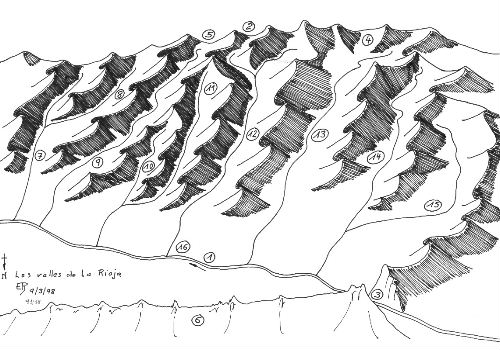|
Bridge Of Mantible
The Bridge of Mantible (Spanish language, Spanish: ''Puente Romano de Mantible'') is a ruined bridge located near Logroño, Spain. It crosses the Ebro, Ebro river between La Rioja (Spain), La Rioja and the Basque Country (autonomous community), Basque Country, connecting El Cortijo and Assa, Spain, Assa. According to some historians, construction of the bridge began in the first half of the 2nd century, well into Rome's imperial period. Others suggest that the bridge was built in the 11th century, near the same time in which the Puente La Reina – Gares, Puente La Reina was constructed over the Arga (river), River Arga, and that both were made to join the two most important cities of the Kingdom of Navarre, Nájera and Pamplona. Neither theory makes clear at what point the bridge became no longer passable, but there are documents that suggest that it had already fully deteriorated by halfway through the 16th century. The bridge is 164 meters long, 5 meters wide and reaches a max ... [...More Info...] [...Related Items...] OR: [Wikipedia] [Google] [Baidu] |
La Rioja (Spain)
La Rioja () is an autonomous community and province in Spain, in the north of the Iberian Peninsula. Its capital is Logroño. Other cities and towns in the province include Calahorra, Arnedo, Alfaro, Haro, Santo Domingo de la Calzada, and Nájera. It has an estimated population of 315,675 inhabitants (INE 2018), making it the least populated autonomous community of Spain. It covers part of the Ebro valley towards its north and the Iberian Range in the south. The community is a single province, so there is no provincial deputation, and it is organized into 174 municipalities. It borders the Basque Country (province of Álava) to the north, Navarre to the northeast, Aragón to the southeast ( province of Zaragoza), and Castilla y León to the west and south (provinces of Burgos and Soria). The area was once occupied by pre-Roman Berones, Pellendones and Vascones. After partial recapture from the Muslims in the early tenth century, the region became part of the Kingd ... [...More Info...] [...Related Items...] OR: [Wikipedia] [Google] [Baidu] |
Pamplona
Pamplona (; ), historically also known as Pampeluna in English, is the capital city of the Navarre, Chartered Community of Navarre, in Spain. Lying at near above sea level, the city (and the wider Cuenca de Pamplona) is located on the flood plain of the Arga river, a second-order tributary of the Ebro. Precipitation-wise, it is located in a transitional location between the rainy Atlantic northern façade of the Iberian Peninsula and its drier inland. Early population in the settlement traces back to the late Bronze to early Iron Age, even if the traditional inception date refers to the foundation of by Pompey during the Sertorian Wars circa 75 BC. During Visigothic Kingdom, Visigothic rule Pamplona became an episcopal see, serving as a staging ground for the Christianization of the area. It later became one of the capitals of the Kingdom of Navarre, Kingdom of Pamplona/Navarre. The city is famous worldwide for the Running of the Bulls, running of the bulls during the festival ... [...More Info...] [...Related Items...] OR: [Wikipedia] [Google] [Baidu] |
11th-century Establishments In Spain
The 11th century is the period from 1001 (represented by the Roman numerals MI) through 1100 (MC) in accordance with the Julian calendar, and the 1st century of the 2nd millennium. In the history of Europe, this period is considered the early part of the High Middle Ages. There was, after a brief ascendancy, a sudden decline of Byzantine power and a rise of Norman domination over much of Europe, along with the prominent role in Europe of notably influential popes. Christendom experienced a formal schism in this century which had been developing over previous centuries between the Latin West and Byzantine East, causing a split in its two largest denominations to this day: Roman Catholicism and Eastern Orthodoxy. In Song dynasty China and the classical Islamic world, this century marked the high point for both classical Chinese civilization, science and technology, and classical Islamic science, philosophy, technology and literature. Rival political factions at the Song dynasty ... [...More Info...] [...Related Items...] OR: [Wikipedia] [Google] [Baidu] |


